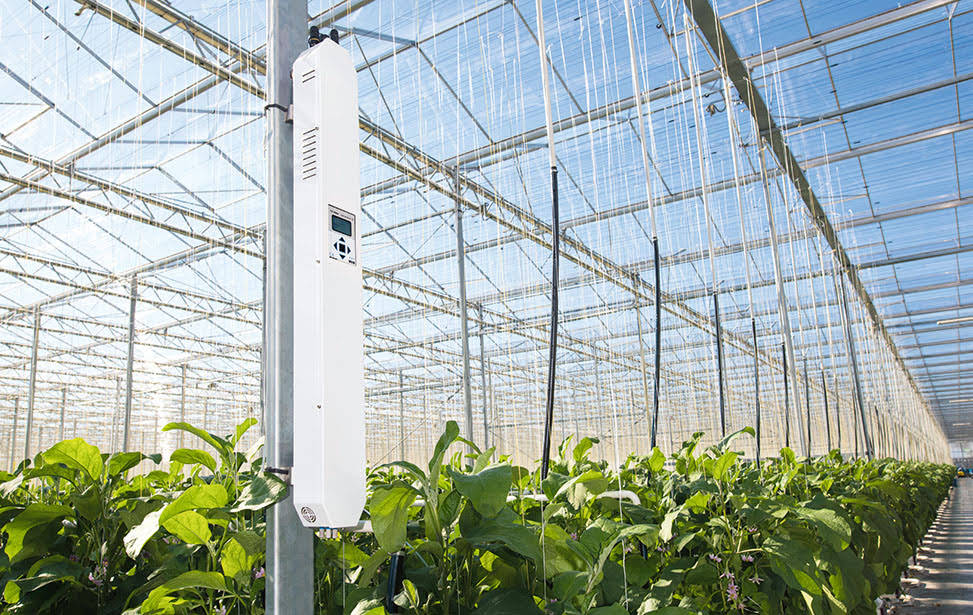- English

Since CO2 has been dosed from boilers or CHP flue gas purifiers in greenhouse horticulture, there has been increasing awareness of the risks of NOx and ethylene damage to the crop. Research has shown that if NOx concentrations are too high, photosynthesis and therefore biomass production are reduced. A recent study shows that low NOx concentrations also negatively affect plant growth. There is therefore an optimum level between ‘not too high’ and ‘not too low’ NOx concentrations in the greenhouse, released with CO2 dosing. The greenhouse horticulture sector can, however, use this optimum positively – this is known as the “Plant vitalisation effect”. This effect results in maximum crop growth, regardless of the CO2 source, provided that the NOx concentration in the greenhouse is kept within a certain range.
Nowadays, dosing CO2 correctly, taking account of the correct NOx concentrations, is more than purely instinct. Historically, there was a tendency to open and close windows based on gut feel. During these challenging times in which energy prices determine the climate more than ever, the required daily ventilation is a cost factor. Ventilation based on gut feel, or for a certain time period, is no longer adequate and can be quite expensive. On the other hand, no ventilation is not an alternative due to the risk of the (harmful) effects on the crops caused by the accumulation of NOx and ethylene in the greenhouse during CO2 dosing.
Concentrations that do not remain within the range of the ideal NOx concentrations for the plant irrevocably lead to production losses. Greenhouse horticulture companies often do not recognise these production losses caused by incorrectly regulated NOx concentrations, because there is insufficient reference in their own crops to observe and quantify these losses.
To be able to remain within the range of the desired NOx concentration, automatic control through a link with the climate computer is a practical solution that results in an immediate growth yield. This can be achieved through: control of the choice of CO2 source, window control, proportional addition of outside air to the CO2 ventilator and deciding on the CO2 setpoint.
Environmental Monitoring Systems (EMS) B.V. (www.macview.nl) specialises in gas measurement systems for monitoring the greenhouse air quality at crop level. The MACView® Greenhouse Gas Analyser allows you to take control of the air quality in the greenhouse.